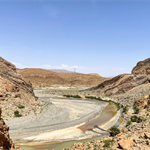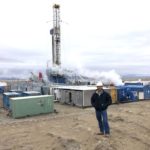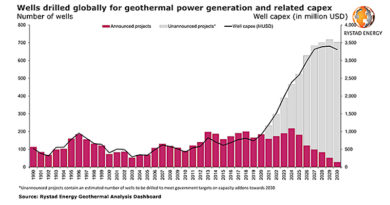CanGEA response to Greenpeace report on geothermal job creation potential
Energy Disrupter

Greenpeace reports that geothermal power can create 1,300 jobs in Alberta. CanGEA agrees and would like to draw attention to renewable heat, which can create 4 times as many jobs as geothermal power production. Geothermal energy is heat, power, and economic growth potential.
Analysis:
Greenpeace recently release a report entitled “100,000+ Jobs: Getting Albertans back to work by building a low-carbon future” which notes that modest funding from the provincial and federal governments directed into renewable electricity and other green initiatives could create tens of thousands of new jobs. CanGEA agrees with most of the reports findings and would like to thank the authors for explicitly including geothermal electricity in their report. The authors wrote that geothermal electricity facilities could create 1,300 new jobs but CanGEA believes that this is a very low estimate as the value does not include the potential for job creation from renewable heat.
The 2004 U.S. department of energy (DOES) report “Buried Treasure: The Environmental, Economic, and Employment Benefits of Geothermal Energy” found that
“for every MW of geothermal power plant construction, 26 direct, indirect, and induced jobs are created”.
The DOE report goes on to show how 5.7 jobs/MW are created for the construction and operations of a power plant and 20.3 jobs/MW are created by the heat supply chain. It is heat where the bulk of geothermal jobs are. Furthermore, a power plant isn’t required to create hundreds of jobs from geothermal resource development. An excellent Canadian example is located in Moosejaw Saskatchewan. The “Temple Gardens Mineral Spa” employs 200 people from a direct use geothermal well; there is no power generation. So despite representing a possible employer, such a business would not be captured in the Greenpeace report’s estimate. CanGEA thanks the authors for including geothermal but the number of jobs possible could easily be 4 times higher, 6,000 instead of 1,300, with the recognition of renewable heat as a valuable resource.
CanGEA has one other concern with the report: the median life cycle emissions for geothermal are a little too high for Alberta. The International Panel on Climate Change (IPCC) report, which is the source of Greenpeace’s numbers, correctly uses facility construction with the cement and steel as input factors. In Alberta though, since most of it’s geothermal potential is in co-produced fluids from existing oil and gas wells, the steel and cement greenhouse emissions costs have largely already been paid as the infrastructure is already in the ground. The actual amount of new emissions that a geothermal heat or power facility would create is likely much lower than the reported value of 38 g CO2/kwh.
That said the report highlights the potential for green infrastructure to revitalize the Albertan economy and in this CanGEA is in full agreement with the report’s authors.
If you have any questions about this, please contact Alex Kent at alex@cangea.ca.
















